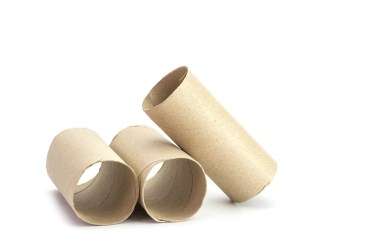Make Your Own Toilet Paper Tube Flashlight

In this article, you will find:
Conduct Your Experiment
Make the Flashlight
1. Lay the toilet paper tube flat on your work surface. It is bound to try to curl up again, so you will either need to designate someone to hold it in place or temporarily tape the edges down.
2. Place a large paper clip lengthwise in the middle of the flattened tube. Insert a brass fastener through one end of the paperclip and push it through the flattened tube. Have your child flip the tube over and flatten out the edges of the brass fastener. If the tube is taped down, you will have to remove the tape to do this.
3. Flip the tube back over, so you can see the paper clip. Make sure it is parallel to the end of the top edge of the flattened toilet paper tube. In the end of the paper clip that doesn't have the brass fastener, use a marker to make a small mark on the tube.
4. Swing the paper clip down and away from the mark, just like the switch it is becoming. Have your child poke a second brass fastener through the mark you made. Turn the tube over, and flatten out the prongs of the brass fastener.
5. Keep the toilet paper tube flipped over, so you can see the prongs of the fasteners. Take the 5"-long piece of wire, and attach one of the stripped ends to the brass fastener on the left side of the tube. The easiest way to attach the wire is to slide it under one of the prongs of the brass fastener, and wrap it tightly. Use a piece of electrical tape to cover the brass fastener to help to hold the wire in place.
6. Repeat the last step with the 8"-long wire and the other brass fastener.
7. Place the 2 D batteries end to end, making sure the positive and negative terminals are touching. Hold them tightly while your child uses electrical tape to tape them together. Have him use as much tape as he needs to make sure the batteries are securely fastened and the terminals won't slip.
8. Put the battery pack inside the flattened toilet paper tube. The negative terminal should be toward the left-hand side (the side with the shorter wire). Have your child use electrical tape to attach the remaining stripped end of the wire to the negative terminal on the bottom of the battery pack.
9. At the other end of the battery pack, wrap the stripped end of the longer wire around the base of the flashlight bulb. Hold it in place with tape, and then touch the bottom of the light bulb to the positive terminal on the battery. Have your child hold it there while you tape them together.
10. Fold the ends of the elastic in which the light bulb is contained toward the top of the battery pack. Place tape around the bottom of the elastic and help your child attach it to the battery pack. When it's taped in place, it should look a bit like a covered wagon's canvas on top of the battery.
11. Roll the toilet paper tube back up around the batteries. Make sure it's tight, and have your child tape it closed.
12. Place the plastic cup megaphone on the top of the flashlight. The smaller opening should go over the elastic around the base of the light bulb. Wrap tape around the bottom of the cup to attach it to the toilet paper tube. By now, your child should see that your contraption is beginning to look like a flashlight.
13. Give your child the flashlight. Have him move the paperclip switch so that it touches the brass fastener it is not attached to. If all the connections are in the right place, the flashlight should light up! When the switch is moved away from the brass fastener, the flashlight will go off.
Observations